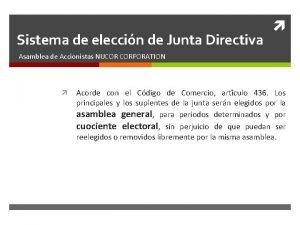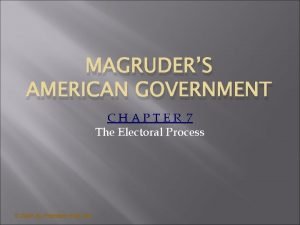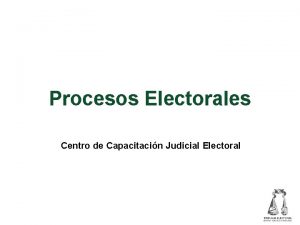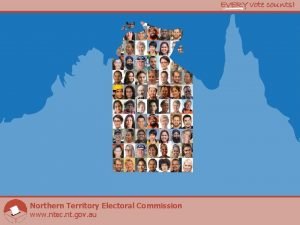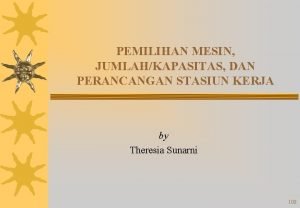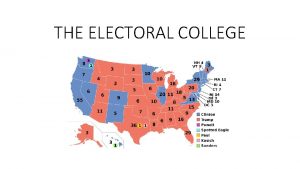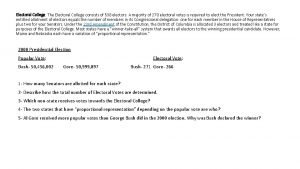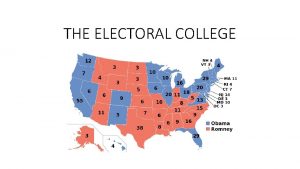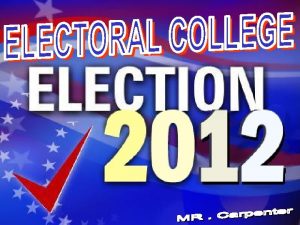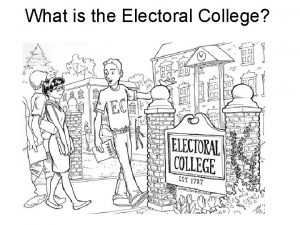The Electoral College n n n The Electoral








- Slides: 8

The Electoral College n n n The Electoral College was first used in 1804 as a compromise between the selection of the President by popular vote and selection by the legislative branch (Congress) The system of the Electoral College was established in Article II, section I, of the U. S. Constitution. Under this system we are not actually voting for the president, but rather a group of electors that will vote for the President.

Electoral Votes by State n The number of State electors equals the number of representatives + senators which represent a state in Congress

How it works… Picking Electors n n The political parties in each state submit an official a list of individuals pledged to their n parties candidate for president. The major political parties select these individuals either in their state party conventions or through appointment by their state party leaders. Members of Congress and employees of the federal government are prohibited from serving as an Elector. On the Tuesday, following the first Monday of November, in years divisible by four, the people in each State cast their ballots for the President…Right? NO…. . In each state that the candidate wins the most popular votes he will receive the party electors for that state. (Winner take all!)

How it works cont’… n n n On the Monday following the second Wednesday of December, each state's Electors meet in their respective state capitals and cast their electoral votes - one each for president. A joint session of congress is held to tally the electoral votes. A candidate needs 270 electoral votes to be declared the winner. ¨ n n n Where does this number come from? There are 435 Representatives in the house and 100 senators in the senate, plus 3 electors in the District of Colombia…add em up 538 - Then divide by 2. . . . = 269 + 1 vote = simple majority

Taking the Pledge. n n Electors pledge to vote for the candidate that won the popular vote in their respective state. However there is no federal law that requires an elector to do so. "Faithless Electors" are members of the Electoral College who, for whatever reason, do not vote for their party's designated candidate. The 24 states that do have requirements issue a variety of punishments for faithless Electors, including fines and possible criminal charges. ¨ CALIFORNIA- $1000 FINE 3 YEAR JAIL SENTENCE Since the founding of the Electoral College, there have been 156 faithless Electors on 9 different occasions. However, none have ever changed the outcome of an election.

Problems with the Electoral College n What happens if no Presidential candidate obtains a majority of the Electoral votes ¨ The House of Representatives votes to select the winner from the top 3 vote getters. Each state gets “ 1” vote.

By the Numbers n n 515 = ¨ Largest electoral vote margin of victory (FDR Vs. Langdon in 1936) 523 to 8 1= ¨ Smallest margin of victory (Hayes vs. Tidwell in 1876) 5= ¨ Margin of victory Bush-271 vs. Gore-266 in 2000 (Florida’s Hanging Chad’s) 543, 895 = ¨ Amount of popular votes Gore beat Bush by in 2000.



